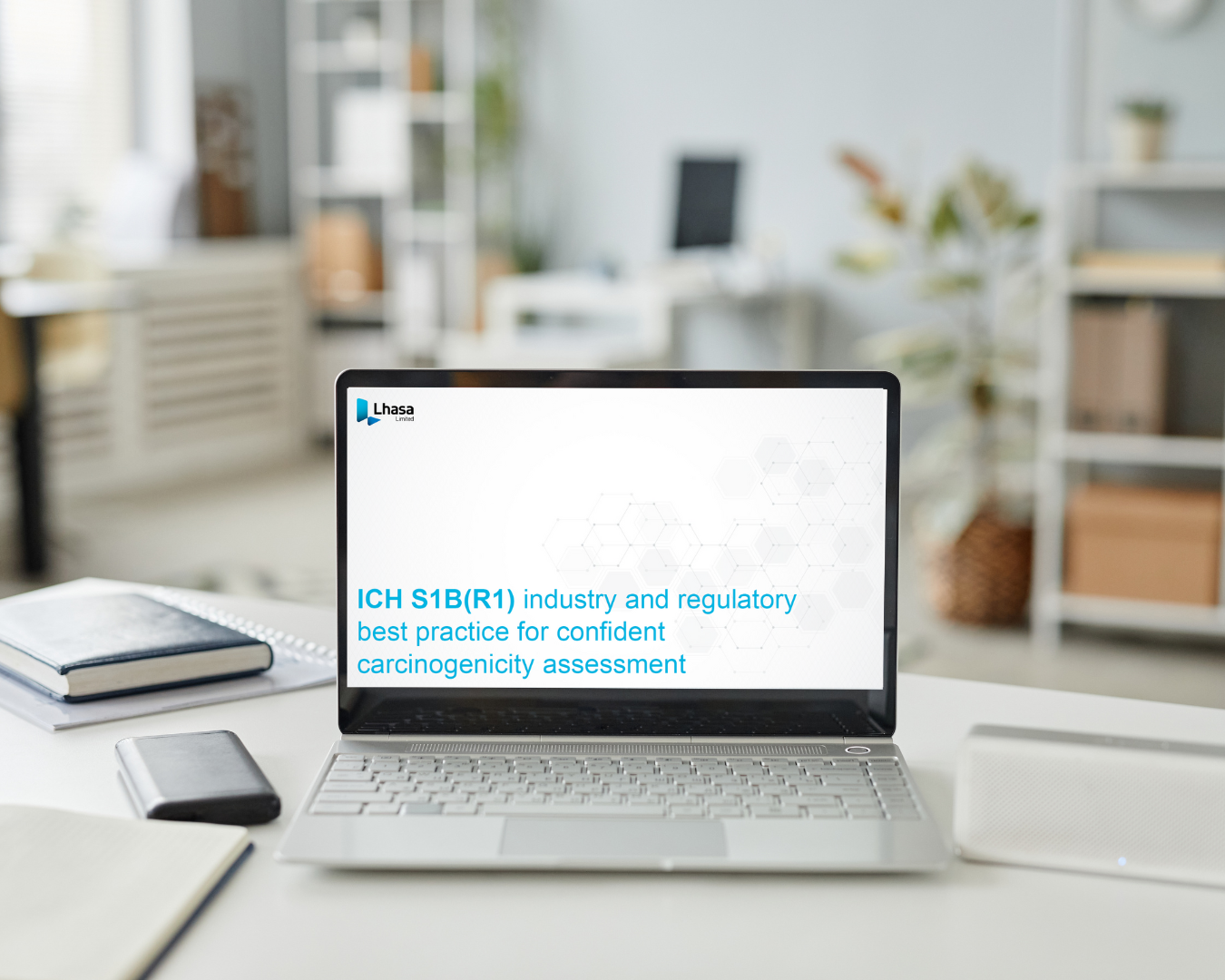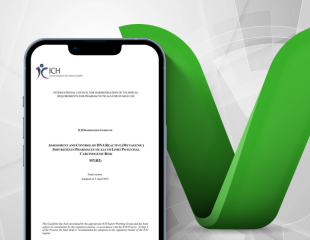If you’re currently relying solely on analytical testing to check for mutagenic impurities in your active pharmaceutical ingredient (API), there is a more time- and cost-effective option available that doesn’t compromise patient safety. Recent data for a medium-sized pharmaceutical company showed that you could save $1.35M annually and reduce time taken by 77%, using in silico tools to support impurity assessment in your API.
Impurities aren’t a problem if they are below acceptable limits in your drug product and robust control strategies are in place. This is regulated by ICH M7, a guideline outlining four different options for control strategies that can be adopted for mutagenic impurities:
Option 1: Test the drug substance. Include a test for the impurity in the drug substance specification at or below the acceptable limit. Periodic verification testing is possible if impurity levels are consistently less than 30% of the acceptable limit.
Option 2: Test an earlier material or in-process. Include a test for the impurity in a raw material, starting material, intermediate specification, or as an in-process control with an acceptance criterion at or below the acceptable drug substance limit.
Option 3: Test an earlier material and demonstrate removal. Include a test for the impurity in an earlier material/in-process control (potentially above the final acceptable limit) coupled with demonstrated fate and purge knowledge to assure the final drug substance level is below the acceptable limit without later testing. This can be justified if the final level is expected to be less than 30% of the acceptable limit.
Option 4: Rely solely on process controls. No analytical testing is required for the impurity on any specification because process parameters and fate/purge knowledge provide sufficient confidence that the final drug substance level will be below the acceptable limit (risk is negligible).
“In many cases justification of this control approach based on scientific principles alone is sufficient.”
– ICH M7 Option 4
The purge factor is the extent to which the manufacturing process can eliminate an impurity, effectively separating it from the API. When you can demonstrate a safe purge factor, you don’t need to generate analytical data, saving valuable time and money. The purge factor approach is well-accepted by regulators because it’s based on scientific knowledge.
How do we calculate purge factor for ICH M7 control option 4?
To calculate the purge factor, you need to understand the properties of the impurity (specifically its reactivity, solubility, and volatility) and the various stages of the manufacturing process.
- Under which conditions is the impurity reactive?
- Is the solubility of the impurity different from the API?
- What is the boiling point of the impurity?
You also must know the synthetic process to consider the conditions at each stage. Every stage that separates the impurity from the API (or its precursor intermediate) will contribute to the purge factor. At reactivity stages, you consider reactivity and volatility factors. At the work-up stages (e.g., extractions, filtrations, and washing), the solubility factor will be considered.
Recommended values are published in an article by Teasdale et al. and are cited within the ICH M7 guideline.
What purge factor value will allow me to submit my drug product under ICH M7 control option 4 without analytical testing?
If your purge ratio is > 1000, this means your predicted purge is 1000 times higher than what is required for the safe limit. This level of confidence allows you to proceed with Option 4 without analytical testing.
However, challenges can arise when attempting to calculate a purge factor and de-risk your impurity, such as:
- Input of incorrect initial concentration
- Assignment of wrong solubility values
- Purge values estimated too high for a particular step can result in rejection by regulators.
- Assignment of incorrect reactivity score (and without scientific justification).
- Failure to re-evaluate if the process is altered.
What solution do we offer to solve these challenges?
Calculating a purge factor can seem overwhelming and complicated. At Lhasa, we provide a solution, to effortlessly support safe confident submission to regulators under Option 4.
Our solution Mirabilis calculates purge factor, ensuring the value is conservative and standardised across your organisation and industry for increased confidence in your regulatory submissions.
Key benefits of partnering with Lhasa to assess impurity risk include:
- No need for cross-checking with a scoring method: Mirabilis has all this information built-in. The solution follows best practices for assigning scores, developed in collaboration with an industry consortium of experts.
- Auto-population of common boiling points: Saving time on manual data entry
- Effortless population of purge scores based on reactivity: Mirabilis can detect the chemical structure and assign the purge score, again saving time on manual data entry and reducing potential error from incorrect scientific evaluation.
- Evidence-based scientific justification: Mirabilis supports scoring results with evidence-based scientific justification, reviewed by Lhasa scientists, providing robust justification for regulatory submissions.
- Standardised solubility scoring support: Includes an in-built solubility calculator. (Read more about best practice on solubility scoring in a related blog and publication).
What about nitrosamines?
Option 4 is increasingly being accepted by regulators to assess the risk of nitrosamines in drug products. We recently published articles in collaboration leading pharmaceutical organisations from Amgen, AstraZeneca, Eli Lilly, GSK, Hoffman-la-Roche, Indorsia, Merck, and Pfizer, detailing successful submission to regulators, demonstrating the de-risking of nitrosamines using purge calculations (process knowledge only). Lhasa works at the forefront of advancing development in the safe assessment of nitrosamines, read more in our recently published open access article about carrying out comprehensive Drug Substance (DS) and Drug Product (DP) workflows. These workflows are the culmination of over five years of extensive cross-industry collaboration, defining the “best practice” for robust, scientifically sound assessments.
We would love to provide support to complete hassle-free Option 4 submissions, get in touch with our team of scientists for more information.
Last Updated on November 13, 2025 by lhasalimited



